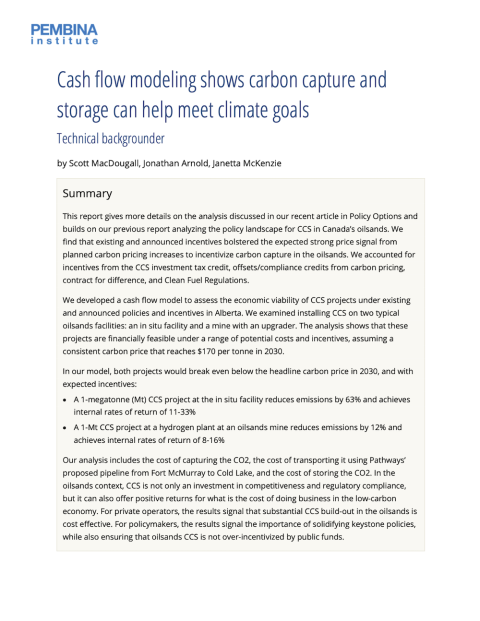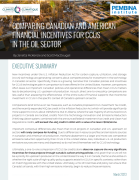This report builds on part three of a series (parts one and two here) about the economics of oilsands carbon capture and storage (CCS) projects in Canada. It also expands on our analysis done for a previous report analyzing the policy landscape for CCS in Canada’s oilsands.
Getting Canada’s oilsands on a net-zero pathway requires companies to make timely, transformative investments. Companies representing 95% of oilsands production have committed to achieving net-zero (upstream) emissions by mid-century – efforts that will be essential for complying with the federal government’s forthcoming cap on oil and gas emissions. CCS could be a significant technology to achieve these ambitious targets.
Yet the economic viability of CCS has been questioned. On one hand, industry claims that more public support is necessary to make these projects economic. This is despite significant financial incentives through existing and proposed government policy. On the other hand, providing any level of public support to the oil and gas sector could “lock in” carbon emissions and make it harder and more expensive to reduce emissions in the future. And with record profits in the oilsands, there is a bigger question about whether companies should pay their own way, treating CCS as a cost of doing business in a global context focused on tackling the climate crisis.
In collaboration with the Canadian Climate Institute, we developed a cash flow model to assess the economic viability of CCS projects under existing and announced policies and incentives in Alberta. We examined installing CCS on two typical oilsands facilities: an in situ facility and a mine with an upgrader. Our analysis shows that these projects are financially feasible under a range of potential costs and incentives, assuming a consistent carbon price that reached $170 per tonne in 2030. In the oilsands context, CCS is not only an investment in competitiveness and regulatory compliance, but it can also offer positive returns for what is the cost of doing business in the low-carbon economy.
This technical backgrounder gives more detail of the higher-level overview of our findings published in Policy Options. It includes the discussion of methodologies, modelling assumptions and results.











